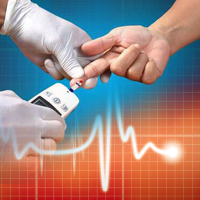Article
Nasal Dry Powder Glucagon Device Is One Step Closer to Approval
Author(s):
Severe hypoglycemia is a complication of insulin use that occurs in 20% of insulin-treated patients on a monthly basis. A small number of these patients become unconscious or seize as a result of severe hypoglycemia. Hospitals are prepared to intervene, but often in the community, a Good Samaritan needs to reconstitute and injection dry powder formulations of subcutaneous and intramuscular glucagon for unconscious or seizing patients.

Severe hypoglycemia is a complication of insulin use that occurs in 20% of insulin-treated patients on a monthly basis. A small number of these patients become unconscious or seize as a result of severe hypoglycemia. Hospitals are prepared to intervene, but often in the community, a Good Samaritan needs to reconstitute and injection dry powder formulations of subcutaneous and intramuscular glucagon for unconscious or seizing patients.
Glucagon Nasal Powder (GNP) has been shown to be safe and effective in multiple studies. The October 2015 issue of Cutaneous and Ocular Toxicology described a study of a new, compact, highly portable device that is being developed, one that does not require injection or reconstitution. GNP powder is absorbed in the nasal passage regardless of the patient’s ability to breath. Although the medication has been proven safe, the device used to administer the medication must also be safe.
This study examined the GNP device's polypropylene resin actuator's safety in vitro and in vivo.
In vitro, an extract of polypropylene was obtained and incubated with cultured mammalian cells for 24 hours. A positive control was incubated with sodium lauryl sulfate. Cytotoxicity was only seen in the positive control arm and therefore, polypropylene appears to have no cytotoxic properties.
The researchers assessed skin sensitization in guinea pigs, rodents that are frequently used as animal models of human skin. The researchers tested in two ways, intradermal and dermal exposure. No sensitivity was seen in any guinea pig exposed to polypropylene extract.
Intradermal reactivity testing, conducted in rabbits, also caused no reactivity was observed at any site.
Based on this study, polypropylene appears to be a safe compound to use in the actuator of the GNP device.




